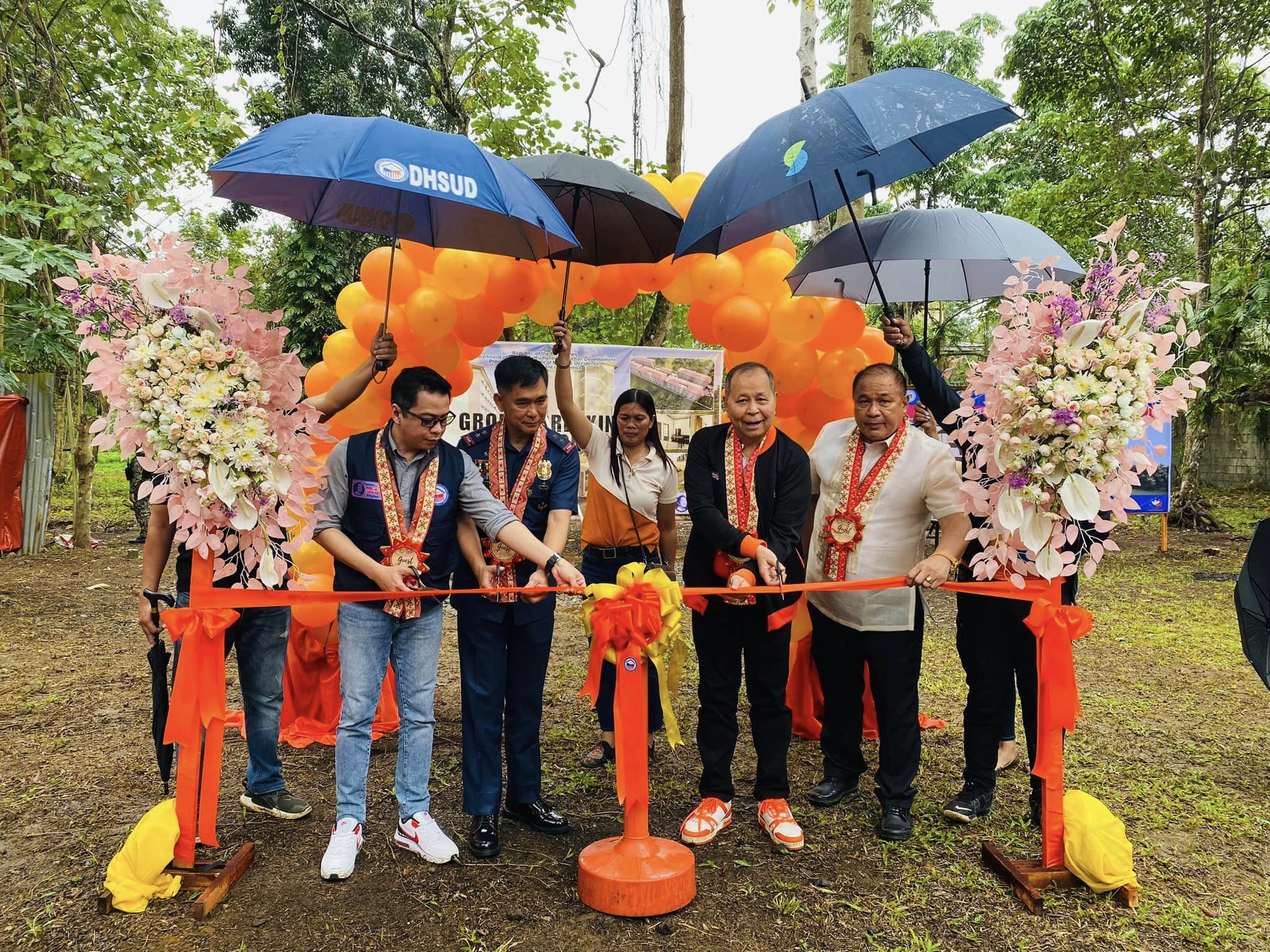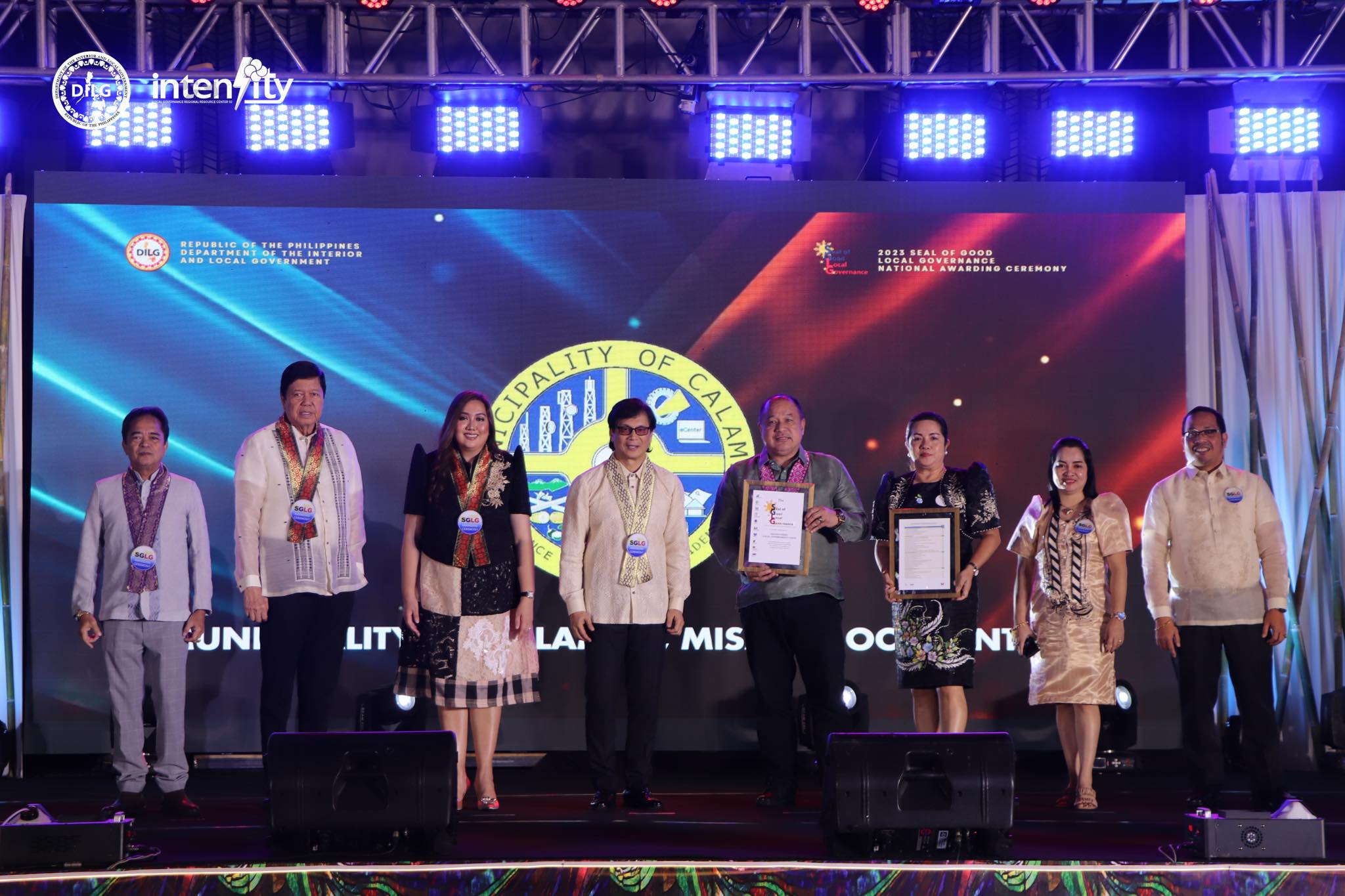| Country | Philippines |
| Region | Region 10 (Northern Mindanao) |
| Province | Misamis Occidental |
| Congressional District | 1st |
| LGU Type | Municipality |
| LGU Classification | 4th Class |
| Local Chief Executive | Dr. luisito B. Villanueva Jr. MNSA |
| Land Area (in square kilometers) | 11,254 Hectares |
| Number of Barangays | 19 |
| Number of Purok | 84 Puroks |
| Number of Households | 5,016 |
| Population (Projected) | 25,083 |
| Average Population Density | 193 (persons/sq. km.) |
| Average Household Size | 5 |
| Average Income Per Household | Php 3,953.64/person |
| Climate | Fourth type |
| Average Annual Rainfall | 2,278.7 mm |
| Death Rate | 5.03% |
| Literacy Rate | 97.7% |
| Malnutrition Rate | 23.26 % |
| Mortality Rate | 6.21 % |
| Employment Rate | 59.96 % |
Calamba was originally called “Solinog”, named after a deep bankrill located at the eastern portion of the poblacion where Langaran River flows. Its name was later changed to CALAMBA by the Municipal Council of Plaridel after the Filipino patriot’s birthplace. It was formerly part of the municipal territory of Plaridel, Misamis Occidental. Being the fastest growing barrio, it was separated from the Municipality of Plaridel and became independent on February 1, 1948, under Executive Order No. 85 series of 1947 by the late President of the Philippines, His Excellency Manuel A. Roxas. It was inaugurated into a municipality on February 14, 1948.
The “Subanos” were the aborigines of the municipality of Calamba, Misamis, Occidental. They had the practice of clearing certain areas one after the other. Those cleared areas were later abandoned and were easily acquiredby the new settlers coming from the Visayas and some parts of Mindanao.
The Municipality of Calamba was created on February 1, 1948 and was inaugurated on February 14, 1948, the following was then elected:
| Hon. Irenio Clapano | Municipal Mayor | 1948-1949 |
| Hon. Angelo Neri | Municipal Mayor | 1949-1953 |
| Hon. Patricio L. Atay | Municipal Mayor | 1953-1957 |
| Hon. Gustavo Neri | Municipal Mayor | 1957-1965 |
| Hon. Lorenzo de Guzman | Municipal Mayor | 1965-1973 |
| Hon. Pedro B. Lorejo | Municipal Mayor | 1973-1986 |
| Hon. Porferio C. Branzuela, Jr. | Municipal Mayor | 1986-1988 |
| Engr. Luisito B. Villanueva, Jr. | Municipal Mayor | 1989-1995 |
| Atty. Inocencio D. Pagalaran, Jr. | Municipal Mayor | 1995-2001 |
| Engr. Luisito B. Villanueva, Jr | Municipal Mayor | 2001-2013 |
| Engr. Ezel T. Villanueva | Municipal Mayor | 2013-2022 |
| Dr. Luisito B. Villanueva MNSA | Municipal Mayor | 2022-Present |
The municipality of Calamba is geographically located in the Northern part of the Province of Misamis Occidental, with the grid approximately 8°31’58” North latitude and 123°39’03”East longitude along the National Highway leading from Ozamis City to Oroquieta City and to Dipolog City of Zamboanga del Norte. It is the center of the five municipalities considering that it is bounded by the Municipality of Baliangao on the North;Municipality of Concepcion on the South; Municipality of Plaridel on the North East; Municipality of Lopez Jaena on the South East and Municipality of Sapang - Dalaga on the West.
CLIMATE
Climatologically elements that have a direct impact on agriculture production are rainfall and typhoon.
Calamba’s climate belongs to the fourth type with no pronounced dry or wet season. This type of climate is characterized as moist, with an average rainfall of2,278.7 mm throughout the year. The wettest period spreads over an eight-month period from May to December; however, the rainiest months are in the last quarter of the year from October to December when about 40% of the rainfall is recorded. While sparse rain showers are experienced during the remaining months, the driest months are February, March and April.
| Land Area and Percentage Distribution |
Area
(Hectares)
|
Percentage |
| Agricultural Area | 7,785.2309 | 69.20 % |
| Forest Area | 84.000 | 0.80 % |
| Residential Area | 331.6379 | 2.95 % |
| Commercial Area | 14.4312 | 0.13 % |
| Land Area Exempt (river, creek, street, public area) | 3,029.1290 | 26.29 % |
| Agriculture Major Crops |
Annual Production (MT) |
Area Planted (HA) |
| Coconut | 13,800 | 6,290.46 |
| Rice | 1,406.56 | 1,533 |
| Corn | 1,039.50 | 100 |
| Banana | 1,152 | 40 |
| Mango | 215 | 43 |
| Durian | 110 | 5.5 |
| Lansones | 212.50 | 85 |
Forest lands area are located in the highly elevated barangays namely: Barangay Siloy, Singalat and Mamalad. Other forest areas are located along the riverbanks and creek banks. Forest land area covers 0.80 % of the total land area of the municipality or 84 hectares. Rattan is the major forest products.
Estimated land area used for residential is 2.95 % or 331.6379 hectares of the total land area of the municipality. Residential houses in the municipality mostly are made of light materials and some of it is made of concrete materials. Facilities like schools, hospital, churches, market, terminal and other facilities to make life more convenient are established.
0.13 % or 14.4312 hectares covers the commercial land of the municipality. Barangay Don Bernardo A. Neri is the main center for the commercial activities of the municipality. Being the center of trade and commerce of the five municipalities namely Plaridel, Baliangao, Calamba, Sapang Dalaga and Concepcion, activities are found in the municipality like public market, banks, pawnshops, lending institution and others. Calamba Integrated Bus Terminal is also located at Barangay Don Bernardo A. Neri.
LAND AREA BY BARANGAY
The land area is distributed to the 19 barangays wherein Barangay Sulipat has the highest land area then followed by Barangay Siloy.
| Name of Barangay | Land Area (sq. km.) |
| Southwestern Poblacion Solinog Northern Poblacion Don Bernardo A. Neri Bunawan Calaran Magcamiguing Langub Bonifacio Dapacan Alto Dapacan Bajo Mamalad Mauswagon Libertad Sulipat San Isidro Singalat Siloy Salvador |
1.6823660 3.3371326 1.5567510 2.50773940 5.1692408 5.6714828 3.39570440 4.1006910 6.9388408 8.3117678 7.0543558 4.8814648 7.6703468 5.0484558 11.7268938 8.0281018 7.5652678 11.3806068 5.9560808 |
| TOTAL | 112.544290 |
| BARANGAY | SLOPING PERCENTAGE |
|
Langub Calaran Magcamiguing Bunawan Northern Poblacion Southwestern Poblacion Solinog Don Bernardo A. Neri Libertad Dapacan Bajo Dapacan Alto Mauswagon Salvador Sulipat San Isidro Bonifacio Siloy Mamalad Singalat |
3% - 8 % 3% - 8 % 3% - 8 % 3% - 8 % 3% - 8 % 3% - 8 % 3% - 8 % 3% - 8 % 8% - 18% 8% - 18% 8% - 18% 8% - 18% 8% - 18% 8% - 18% 8% - 18%, 18% - 30% 8% - 18%, 18% - 30% 8% - 18%, 18% - 30% 8% - 18%, 18% - 30% 8% - 30% |
ECONOMIC SECTOR
Calamba is a center of trade and commerce in the northern part of the Province of Misamis Occidental.
Based on the record from the Office of the Municipal Treasurer there are 785 business establishments in the municipality. These are pawnshops, banks, lending institutions, bakeries, drug stores, gasoline stations, department store, grocery stores, restaurants and others.
There are micro-industries present in the municipality, strategically located in the Poblacion, these are solar driers, rice and corn mills, machines and welding shops, vulcanizing shops, furniture wood carving tailoring, hollow block making, repair shops and etc.
| Major Fields of Employment | Population | Percentage |
| 1. Farming/Self Employed | 5,068 | 68% |
| 2. Government/Private | 1,500 | 20% |
| 3. Hired Labor | 886 | 10% |
| LIVESTOCK | POPULATION |
| Poultry | 61,959 |
| Swine | 8,254 |
| Cattle | 3,854 |
| Carabao | 3,835 |
| Goat | 3,835 |
The most numbered livestock is chicken with a total of 30,167 heads; followed is swine or pig with 3,389 heads; cattle with 1,765 heads; carabao with 1,363. The last is goat with 956 heads. There are more households who engaged in poultry production. There are residents engaged in livestock raising as an alternative livelihood in order to generate additional income for the family.
| Roman Catholic | 50% |
| Philippine Independent Church | 20% |
| UCCP/Evangelical | 10% |
| Other Religion | 20% |
| Franchise Holders |
Location of Firms | Facilities & Capacities |
|
A. LANDLINES
1. CRUZTELCO
2. PLDT |
Main Office is in Dipolog City
DBAN, Calamba
Solinog, Calamba Northern Poblacion |
Local & International Analogue/Digital/ Phone card
Public Calling Office
Local & International Analogue/Digital/
|
|
B. CELL SITES
1. Smart
2. Globe |
Manila
Manila |
Cell-Phone Relay Station/Internet Connection
Internet Connection/Relay Station |
|
C. RELAY STATIONS
2. LIBERY |
Manila
Manila |
Relay Station
Relay Station |
TRANSPORTATION
A. Roads
The municipality of Calamba has a road network of more than 154 kilometers and it is classified as the National, Provincial, Municipal and Barangay Roads.
| Classification | Length (km.) | Percentage Distribution |
| National Roads | 16.090 | 10.39 |
| Provincial Roads | 48.730 | 31.47 |
| Municipal Roads | 16.589 | 10.71 |
| Barangay Roads | 73.455 | 47.43 |
| Total | 154.864 | 100.00 |
The municipality has a total of 15 bridges
| Number of Bridges | |
| National | 7 |
| Provincial | 4 |
| Municipal | 1 |
| Barangay | 3 |
| TOTAL NUMBER OF BRIDGES | 15 |
| Types of Vehicles | Transportation System |
|
Buses
Rural Transit and Super 5 |
|
| Vans and Jeepney |
|
| Motorillas or Mottorcabs |
|
|
Motor-single or commonly called |
|
Total Irrigation Farms - 152.4 Hectares
- Details
- Hits: 47023



































